MARKET OVERVIEW
Rapidly turning zones in the Global Lateral Flow Assays marketplace constitute the major part of the global medical diagnostics industry, which is considered as under rapid and point-of-care testing capacity developments. Often remembered as easy to handle and instant results, lateral flow assays will increasingly create changes in health care, environmental testing, food safety, and veterinary applications. Market evolutions would reflect technological advances, regulatory landscapes, and respondents' changing demands in developed and emerging regions.
The Global Lateral Flow Assays market comprises a vast range of products. Most of these products are used to detect the presence or absence of an analyte or analytes in complex mixtures without the need for expensive specialized equipment. Tests of this kind include those for the detection of infectious diseases, pregnancy, abused drugs, and cardiac markers among others. Lateral flow assays will surely grow widely, especially in the locations where rapid testing on-site becomes vital-discharging any tests in clinics, hospitals, laboratories, and even at home-this makes them a very versatile tool in the diagnostic toolkit.
The Global Scope of Lateral Flow Assays Market is going to extend beyond the scope of traditional healthcare usages. Hence, with increased food safety testing comes greater improvements in assays for detecting contaminants in a rapid and accurate fashion for the public health standards. In environmental testing, there will also be an increased dependence on lateral flow assays for the monitoring of pollutants and toxins in both soil and water. The same will be the case for animal diagnostics, where the assays are also expected to produce rapid results that could assist in managing and treating disease in animals.
Technological advances will be central in forming the Global Lateral Flow Assays market. The improvements in nanotechnology and the more sensitive assays along with the application of digital readers will basically lead to more reliable and accurate results. They would permit the entrance of lateral flow assays into more complex diagnostic fields such as chronic disease monitoring and detection of biomarkers. Furthermore, the market will also see a transition into multiplexing capability, which allows several analytes to be tested at the same time, thus improving efficiency in diagnostic procedures.
Regulatory frameworks will shape the Global Lateral Flow Assays market as manufacturers will need strict guidelines to ensure both safety and efficacy in their products. Moreover, different regions will impose different regulatory requirements, which will eventually impact how the products are developed and brought to the market. Gaining market approval and thus wide adoption of new assays will become possible through compliance with these regulations.
The Global Lateral Flow Assays market would be further geographically diversified, with immense opportunities coming the way of all emerging markets. Most of these regions will demand cost-effective, user-friendly diagnostic solutions designed to work in resource-poor settings. The availability and simplicity of lateral flow assays place them in an especially attractive position in those areas where access to complicated laboratory infrastructure is limited. Further, local government efforts along with those of international health organizations and private companies would help disseminate and implement such diagnostic tools.
The domain will remain dynamic and revolutionary within the bounds of medical diagnostics and cover all aspects of healthcare, food safety, environmental monitoring, and even veterinary science. High-end technology and regulatory development in the area drive the general expansion. The demand for rapid, reliable, and accessible diagnostic solutions would continue to propel the global market forward in meeting the evolving needs of diverse sectors worldwide.
Global Lateral Flow Assays market is estimated to reach $20,624.55 Million by 2032; growing at a CAGR of 7.7% from 2025 to 2032.
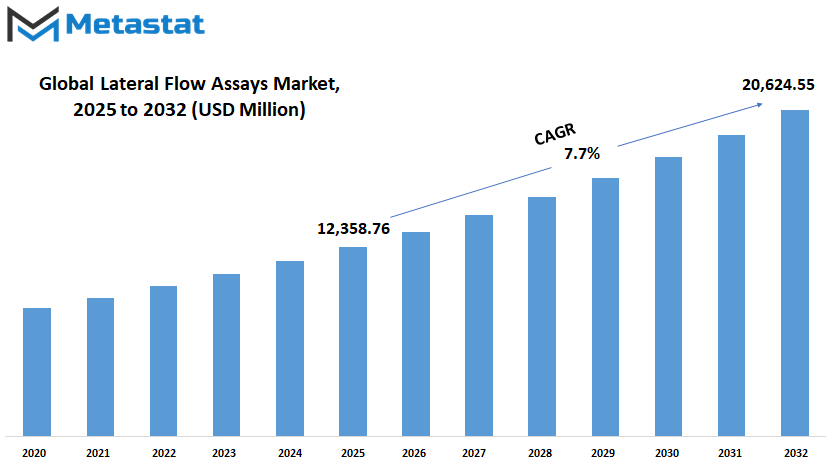
GROWTH FACTORS
The Global Lateral Flow Assays market is expected to mark a highly lucrative period during the forecasted tenure. Several key drivers are fundamental in the market, based predominantly on a single factor-the increase in demand for rapid diagnostic testing. Lateral flow assays have become instrumental in ensuring rapid and accurate diagnosis of patients, especially when considered by healthcare systems across the globe. With results coming quickly and without the requirement of complex laboratory equipment, lateral flow assays are even more vital in settings where healthcare facilities may not be readily available. Quick diagnosis can thus become instrumental in ensuring patient benefits and outcome.
Another factor that enhances the growth of the Global Lateral Flow Assays market is the rising incidence of infectious diseases and chronic conditions. The recent increase in home testing kits from health care setting-use in the wake of COVID-19-further highlighted the necessity of large-scale, rapid testing. Further awareness for early detection of diseases blends with preventive care and is fostering increased trust in such tests among both healthcare workers and consumers.
Nevertheless, some issues impede the growth that would impact market performance. One major impediment is the concern on accuracy and sensitivity of lateral flow assays when compared to much better diagnostics. False positives or negatives could shake confidence in these tests, especially when deployed in critical medical circumstances. Additionally, strict regulatory clearances would have different standards in different countries, which may slow down the entry of new products into the market; these factors may also serve as hindrances to the manufacturers and hence limiting the widespread use of these assays in certain regions.
However, abounding opportunities for Global Lateral Flow Assays market lie with technological advancements. Continuous R&D, leading to the development of more reliable and sensitive assays, might help to alleviate some of the concerns regarding accuracy. The integration of a digital technological platform-with smartphone-based readers and connected devices-would further boost the usability of these tests, thus rendering them attractive to healthcare providers and consumers alike. Such developments will promote expansion beyond health care to include food safety and environmental testing, thus opening up even faster growth in those markets.
Future growth of the Global Lateral Flow Assays market will result from increased emphasis on personalized and point-of-care diagnostics by healthcare systems. Demand levels, confronted with their own set of challenges, together with technological innovation and introduction of new application areas, will spur the marketing activities well into the future offering lot of growth opportunities.
MARKET SEGMENTATION
By Product
Lateral flow assays are currently used worldwide for various rapid, easy-to-use, and inexpensive tests to identify the presence or absence of target materials in samples, which generally do not require sophisticated laboratory equipment. Wayne states that the global lateral flow assay market will continue to witness unprecedented growth in the near future due to technological advancement and the parallel growth in demand for rapid diagnostic solutions. Since both of these systems are very simple, fast, and inexpensive, they became the prime tool in medicine for point-of-care testing.
The huge demand generated due to the very quick need for diagnostic tools during health emergencies, namely the COVID-19 era, is one of the most important reasons for this market expansion. Importance of rapid testing adoption around the world highlighted the role of lateral flow assays in managing public health emergencies. Beyond pandemics, we will see an increased demand for these assays for the detection of infectious diseases, chronic disorders, and even veterinary and environmental testing. Versatile applications certify these assays as an excellent resource for developed and developing settings.
By product, the Global Lateral Flow Assays market is further segmented into Kits & Reagents and Lateral Flow Readers. Kits and reagents form the backbone of these tests, providing the necessary components for detecting specific biomarkers. As research progresses and more biomarkers are identified for different diseases, kits are expected to become increasingly diverse and sophisticated in their design. This will ensure more accurate, reliable tests that can be operated in varying environments, from hospitals to remote clinics.
Lateral flow readers, on the other hand, have gained importance in enhancing accuracy and quantification of test results. While traditional lateral flow assays rely on visual interpretation, which may, at times, result in errors, readers provide a digital solution that improves precision of results. In the future, we anticipate even greater integration of digital technologies with lateral flow assays to improve data capture, remote monitoring, and potentially connectivity with healthcare databases for comprehensive management of the patient.
Overall, the Global Lateral Flow Assays market will encounter great prospects driven by technological advances, healthcare needs, and pressure applied for the use of diagnostics for common health problems. Such changes will redefine health care in the decades to come, accelerating, validating and increasing affordability for diagnostic solutions worldwide.
By Technique
Steady growth in the coming years of the Global Lateral Flow Assays market can be anticipated by advancements in medical diagnostics and high demand for the rapid, dependable testing methods. Lateral flow assays are the most common usage in different types of industries but mostly in health care to help detect diseases and monitor health conditions to guide proper treatment decisions. The tests are simple, affordable, and show quick results and are, therefore, a handy tool in clinics and at home.
By technique, the market is segmented into Sandwich Assays, Competitive Assays, and Multiplex Detection Assays. Sandwich Assays are the most widely used because of their high sensitivity and accuracy in detecting specific antigens or antibodies. This technique is widely applied in diagnosing infectious diseases, monitoring hormone levels, and detecting biomarkers for various health conditions.
Competitive Assays are used when the molecules are small and cannot be detected using sandwich formats. They provide accurate results and are applied in drug testing and environmental monitoring. Multiplex Detection Assays are a more advanced approach that allows the detection of multiple targets in a single test. With advancements in complex diagnostics, it will be required to test for numerous conditions at a time.
There is promise to the future of the Global Lateral Flow Assays market in terms of new innovations that might enhance the tests' sensitivity, accuracy, and versatility. Probably, digital integration and smartphone friendliness will revamp the practice of these assays, providing users with real-time data sharing and analysis.
This will be especially advantageous in remote and resource-poor settings where the access to the laboratory infrastructure is limited. Besides, further improvements in multiplex assays will provide healthcare providers the ability to identify several conditions at once using one test, hence saving time and cost that was associated with previous diagnostic techniques.
Apart from the health sector, lateral flow assays are gaining their new applications in food safety, environmental testing, and veterinary diagnostics. With a positive trend in awareness and knowledge of health and safety around the world, quick and reliable testing solutions will be in high demand, which further pushes demand. Investment by governments and private organizations in research and development to create more effective assays will promote market growth. The Global Lateral Flow Assays market will witness growth, driven by technological upgradations and the increasing need for rapid diagnostic solutions in different industries.
By Application
The Global Lateral Flow Assays market is also anticipated to gain stable growth during the next couple of years because of the rising advances in the technologies of diagnosis and the higher demand for speedy and easy to use testing methodologies. Lateral flow assays have widespread usage mainly due to its simplicity, relatively lower cost, and quick outcome; hence they become an integral part of numerous industries. In light of developing technology, it improves the speed and accuracy of the tests thereby expanding new prospects of their usages.
By application, the market is categorized into Clinical Testing, Veterinary Diagnostics, Food Safety & Environment Testing, and Drug Development & Quality Testing. Clinical testing holds a significant share, as these assays are commonly used for point-of-care diagnostics, including pregnancy tests, infectious disease detection, and chronic condition monitoring.
The growing emphasis on early disease detection and personalized medicine will further boost the demand for these tests in clinical settings. The COVID-19 pandemic underlined the significance of rapid diagnostic tools, with lateral flow tests emerging as a frontline tool in managing the crisis. This has increased the acceptance of such tests in routine healthcare, a trend that is likely to continue.
Lateral flow assays are gaining popularity in veterinary diagnostics because they can quickly identify diseases in animals, which is important for maintaining livestock health and preventing zoonotic diseases. As the concern for animal health and food safety increases, the use of these tests in veterinary practices is expected to increase. The agriculture and livestock industries increasingly rely on quick diagnostic tools to ensure the health of animals, which in turn supports food supply chains.
Lateral flow assays are increasingly finding applications in the Food Safety & Environment Testing segment. Contaminants detected by such lateral flow assays may include pathogens, toxins, or allergens, which could affect food products as well as samples from the environment. Due to increased scrutiny related to food safety and greater sensitivity towards environmental health, industries turn to rapid tests to achieve safety and avoid contraventions in their activities. Consumers are more conscious of what they consume, thus forcing companies to focus on safety through reliable and fast testing methods.
In Drug Development & Quality Testing, lateral flow assays are used in many aspects of pharmaceutical research and manufacturing. These tests help monitor the quality of drugs and ensure compliance with certain regulatory standards. Because of this growth of pharmaceuticals, fast, accurate quality control tools such as lateral flow assays will prove to be more important.
In the future, the Global Lateral Flow Assays market should expand even further as innovations keep improving its test sensitivity and specificity. Integration of the digital features in the lateral flow devices, including smartphone-based reading and data analysis, would not only increase the utility but also broaden the applications of these types of tests. Evolution of these tests toward further reliability, efficiency, and wide use in various industries will be seen.
By End-use
The Global Lateral Flow Assays market shall grow at a steady pace in the future as hospitalization needs are increasing along with innovative medical diagnostic equipment. Lateral flow assays are primarily used in rapid testing and are now a crucial tool in many departments of medicine. For their ability to deliver accurate results within short periods, they become especially valuable in situations such as outbreaks of diseases or emergency care.
Segmented by end-use, the Global Lateral Flow Assays Market is classified into Hospitals & Clinics, Diagnostic Laboratories, Home Care, Pharmaceutical & Biotechnology Companies, and Others. Hospitals and clinics are always in great demand for rapid diagnosis facilities and hence represent a major market share for lateral flow assays. They help detect a condition through lateral flow tests that significantly speed up medical decisions regarding treatment. As hospitals continue to implement more point-of-care testing to improve the care for patients, demand for lateral flow assays will continue increasing.
Diagnostic laboratories are also playing a significant role in the market's growth. These labs apply lateral flow assays for large-scale screening and confirmation of various diseases. With the growing need for accurate diagnostics in both developed and developing regions, laboratories are expanding their use of these tests. The increasing prevalence of infectious diseases and the demand for reliable testing methods will continue to drive this segment forward.
The home care segment is booming and gaining a rapid momentum in this patient-centric world where the self-monitoring is a must. The lateral flow assays help people in carrying out easy diagnosis at their home and encourage them to come for an early checkup to deal with their health condition, thus, showing increased growth as awareness of personal health is being spread along with convenience and privacy. Normalizing at-home diagnostic testing, another impact of the COVID-19 pandemic, will likely be carried forward into the future.
Pharmaceutical and biotechnology companies are another key end-user group in the Global Lateral Flow Assays market. These companies use lateral flow assays in drug development and research, especially for rapid screening and biomarker detection. As the pharmaceutical sector grows and the demand for personalized medicine increases, the need for efficient testing methods like lateral flow assays will continue to grow.
In the future, following the advancement of technology and easy accessibility to health care, the Global Lateral Flow Assays market would expand into new areas of application. The requirement for quicker, cost-effective, and more accurate diagnostic instruments will continue propelling this market and will see steady growth within sectors.
|
Forecast Period |
2025-2032 |
|
Market Size in 2025 |
$12,358.76 million |
|
Market Size by 2032 |
$20,624.55 Million |
|
Growth Rate from 2025 to 2032 |
7.7% |
|
Base Year |
2024 |
|
Regions Covered |
North America, Europe, Asia-Pacific, South America, Middle East & Africa |
REGIONAL ANALYSIS
The Global Lateral Flow Assays market is quite rapidly changing, influenced by regional developments and future advancements in healthcare technologies. This market, that is pretty much important for rapid diagnostic testing, is segmented geographically into North America, Europe, Asia-Pacific, South America, and the Middle East & Africa. Every region carries a certain set of factors that drive or challenge market growth, thereby influencing the global trajectory of the industry.
In North America, the United States leads the market due to its strong healthcare infrastructure and high adoption of advanced diagnostic technologies. The presence of key market players and continuous research and development activities also contribute to the region's dominance. Canada and Mexico follow closely, with growing investments in healthcare and a rising demand for quick and reliable diagnostic tools. The future in North America is bright, with increasing focus on early disease detection and point-of-care testing.
The European market comprises the UK, Germany, France, Italy, and the Rest of Europe, which is mature and growing steadily. Germany and the UK lead the way due to advanced healthcare systems and significant government support for medical research. The increasing aging population and the need for efficient diagnostic solutions further propel market growth in this region. As Europe continues to emphasize healthcare innovation and efficiency, new opportunities will arise in the Global Lateral Flow Assays market from public and private sector collaborations.
Asia-Pacific, which comprises countries such as India, China, Japan, South Korea, and the Rest of Asia-Pacific, is expected to witness the fastest growth. The rising population, improving healthcare infrastructure, and awareness of early detection of diseases drive the demand in this market. China and India are particularly putting a lot of investment into their healthcare systems in order to bring affordable diagnostic solutions to their very large populations. As technology gets more accessible, and healthcare improves, the future of the Global Lateral Flow Assays market will be strongly influenced by the Asia-Pacific region.
South America: Expanding health sectors, particularly Brazil and Argentina, offer growth for diagnostics. A good deal of advancement in diagnosis techniques is noted for the remaining region, which includes challenges, but it also means limited health-care funding would cause slow movement forward. More investments and cooperation across the border might lead the way to some gradual growth.
The Middle East & Africa, including GCC Countries, Egypt, South Africa, and the Rest of the region, is experiencing slow market growth. Increasing incidence of infectious diseases and rising demand for point-of-care testing are factors driving the demand. The UAE and Saudi Arabia are investing heavily in healthcare infrastructure, which will be a positive driver for future growth in the Global Lateral Flow Assays market. This market will continue to evolve as more regions recognize the importance of rapid diagnostics, thereby opening up new possibilities and innovations.
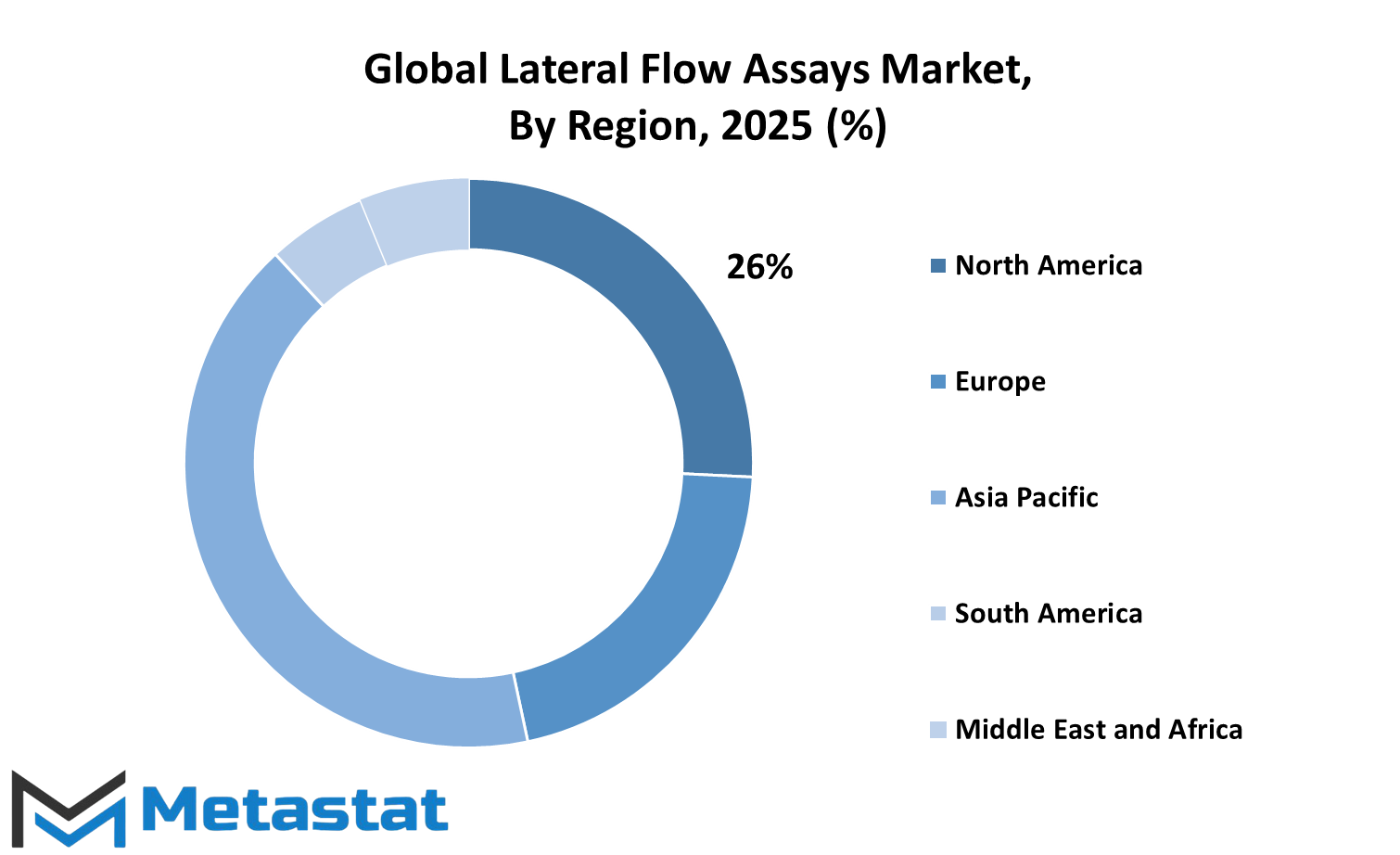
COMPETITIVE PLAYERS
Global Lateral Flow Assays market size is expected to grow in the coming years driven by the evolution of diagnostic technologies and an increase in demand for rapid, reliable testing solutions. Lateral flow assays are one of the best known for being simple, rapid, and low-cost. Hence, they form a fundamental instrument in clinical diagnostics as well as in various applications such as food safety and environmental testing. Improvement in point-of-care diagnostics as well as the increasing demand for healthcare accessibility is expected to propel this market further.
Few of the major companies drive the competition of the Global Lateral Flow Assays Market through their innovative moves. These aggressive players are highly investing in research and development to develop accurate and sensitive tests in light of the demand for rapid results in diagnostic needs. Companies such as Abbott Laboratories and Roche Diagnostics are at the forefront of innovation, constantly introducing new products. Thermo Fisher Scientific and Siemens Healthineers are also making significant contributions to the market's growth through technological advancements and strategic partnerships that enhance their global reach.
Qudel Corporation and Axxin are working hard to develop simple devices that have accurate results. Meridian Bioscience, Chembio Diagnostic Systems is working on developing lateral flow assays for applications in medical testing areas. PerkinElmer, Inc. and Hangzhou Clongene Biotech are contributing significantly to developing more sensitive assays and entering into new markets. Meanwhile, with rapid testing technologies working on Abingdon Health and Fortis Life Sciences, they attempt to cater to the clinical and non-clinical sectors. Important players also include Merck KGaA and Hardy Diagnostics, who continuously work on improving their diagnostic product performance to meet the evolving needs of global health.
The Global Lateral Flow Assays market will be even more competitive and innovative in the coming years. This would mean that in the future, more decentralized and patient-centered healthcare systems will call for more speedy and easy-to-use diagnostic tools. Emerging markets will be pivotal in this growth, providing room for established players as well as new entrants to gain more market share. The increased interest in personalized medicine and the increasing inclusion of digital technologies in diagnostic procedures will further enhance the development of more complex lateral flow assays, ensuring the sustained growth of the market in the future.
Lateral Flow Assays Market Key Segments:
By Product
- Kits & Reagents
- Lateral Flow Readers
By Technique
- Sandwich Assays
- Competitive Assays
- Multiplex Detection Assays
By Application
- Clinical Testing
- Veterinary Diagnostics
- Food safety & environment testing
- Drug Development & Quality Testing
By End-use
- Hospitals & Clinics
- Diagnostic Laboratories
- Home Care
- Pharmaceutical & Biotechnology Companies
- Others
Key Global Lateral Flow Assays Industry Players
- Abbott Laboratories
- Roche Diagnostics
- Thermo Fisher Scientific
- Siemens Healthineers
- Quidel Corporation
- Axxin
- Meridian Bioscience
- Chembio Diagnostic Systems
- PerkinElmer, Inc.
- Hangzhou Clongene Biotech
- Abingdon Health
- Fortis Life Sciences
- Merck KGaA
- Hardy Diagnostics
WHAT REPORT PROVIDES
- Full in-depth analysis of the parent Industry
- Important changes in market and its dynamics
- Segmentation details of the market
- Former, on-going, and projected market analysis in terms of volume and value
- Assessment of niche industry developments
- Market share analysis
- Key strategies of major players
- Emerging segments and regional growth potential




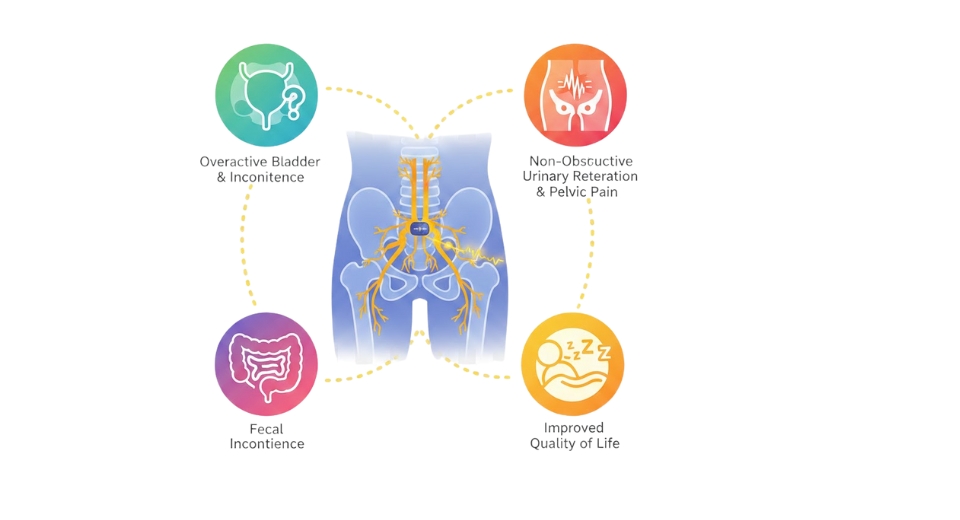
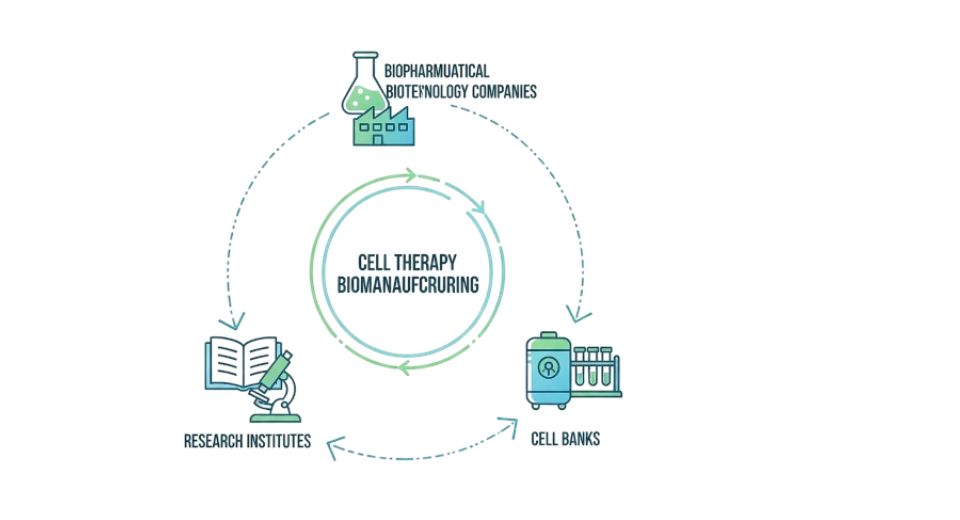
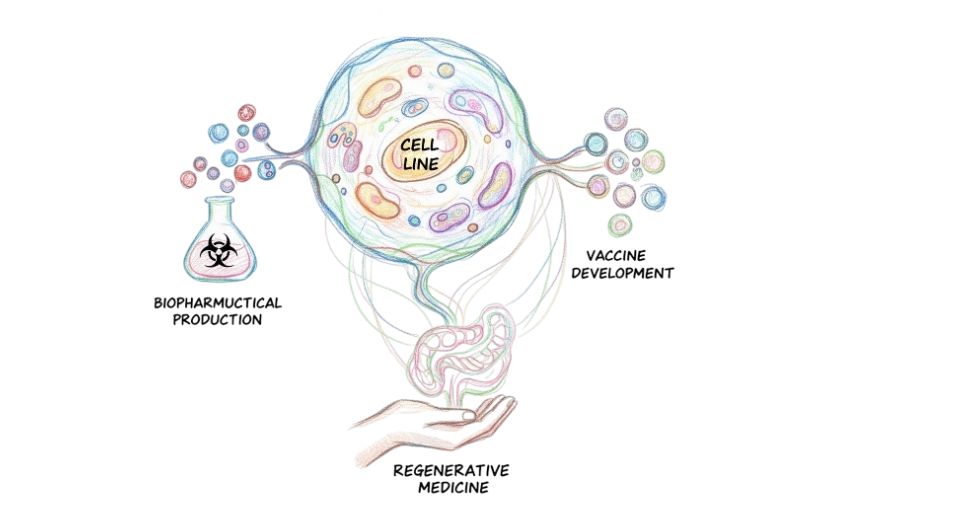

 US: +1 3023308252
US: +1 3023308252






